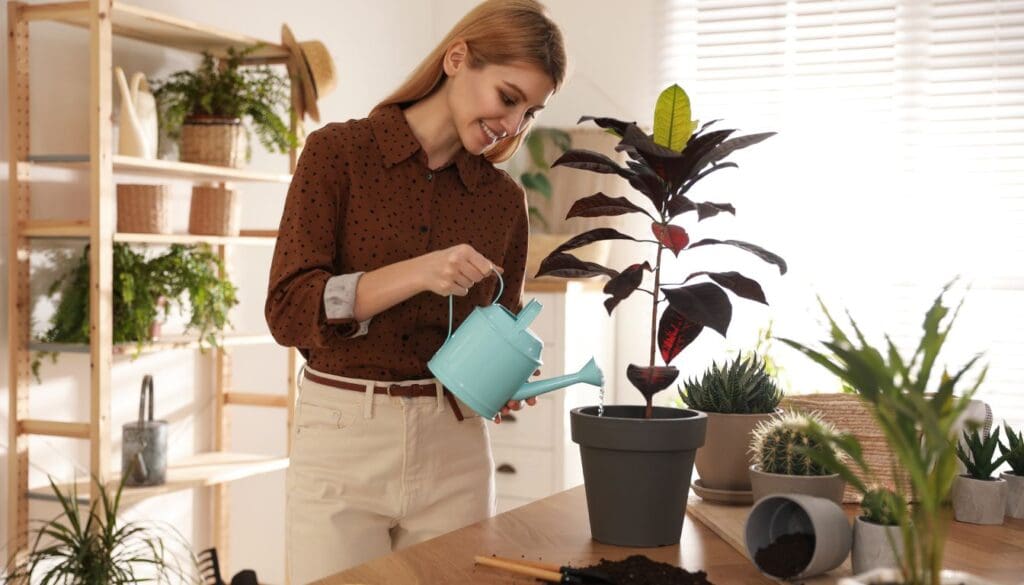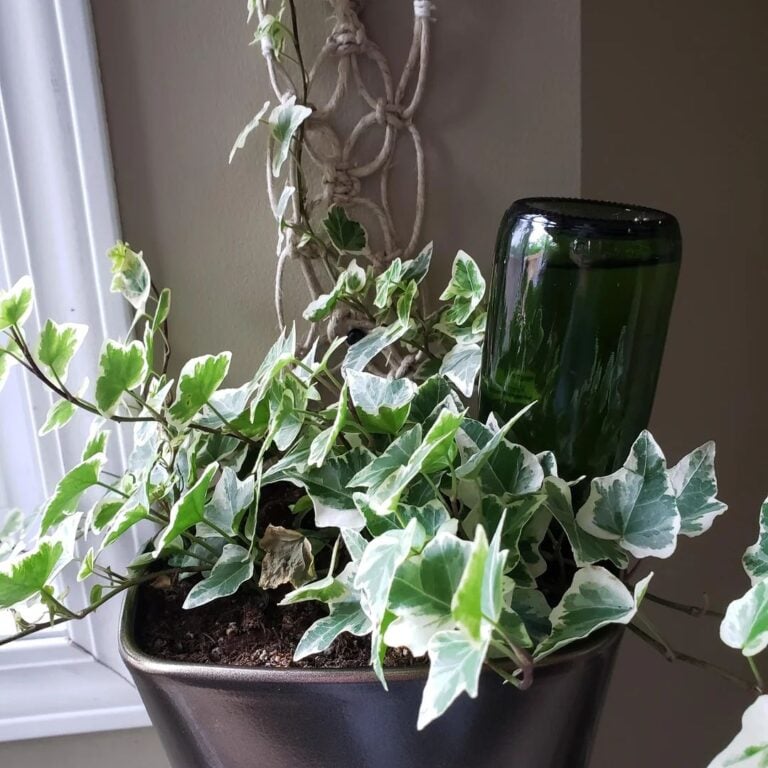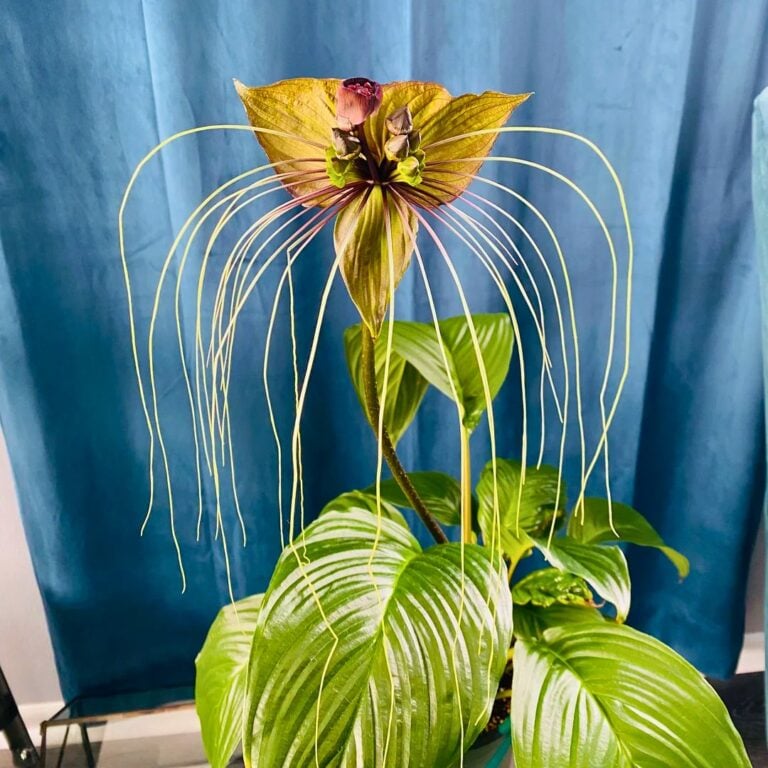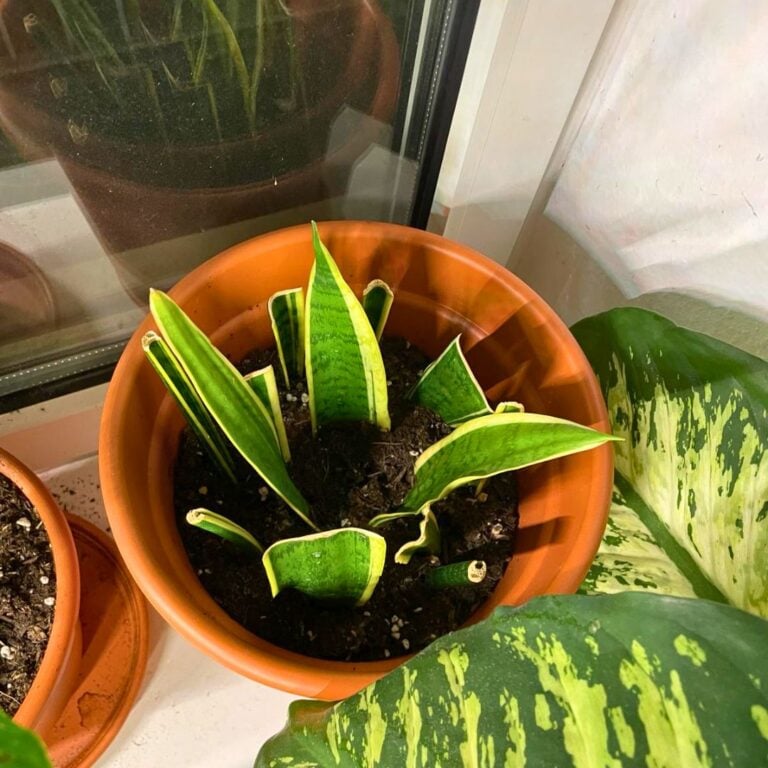11 Pro Tips For Using Hydrogen Peroxide In Your Garden
Turns out, hydrogen peroxide isn’t just for cleaning cuts—it can actually help your plants grow stronger and stay healthy.
I know, it surprised me too. With a few clever tricks, this simple stuff from your medicine cabinet can really change the way your garden looks and feels.
I’m sharing the ways I use hydrogen peroxide to keep my garden cleaner, prevent plant diseases, and boost growth.
These methods are easy, safe, and work for pretty much any gardener, whether you’re into veggies, flowers, or houseplants.
Please note: Simplify Plants is reader-supported. As an Amazon Associate, I earn from qualifying purchases made by our readers with no extra cost added to you all! Some links in the post are affiliate links and I get a commission from purchases made through links in the post.
1) Dilute 3% hydrogen peroxide with water before applying

I always mix hydrogen peroxide with water before using it outside. Straight peroxide? Way too strong. It can hurt your plants and all the good stuff in your soil.
A safe bet is one part 3% hydrogen peroxide to four parts water. That seems to be enough to clean and give a little oxygen boost without burning anything.
I usually pour this mix into a clean spray bottle or watering can. Clear labeling is a must—don’t want to mix it up with regular water!
I also like to test the diluted solution on a small area first. If nothing looks weird after a day, I know it’s safe enough for the rest.
For watering soil, the same ratio works. It’s just enough to improve oxygen around the roots and help things grow a bit better.
I try not to go overboard—once every week or two is plenty for most of my plants.
When spraying leaves, I do it in the early morning or late afternoon. Sun can burn leaves if the peroxide’s still wet, so timing matters.
I keep my hydrogen peroxide in a cool, dark spot so it doesn’t lose its punch. Light and heat break it down faster than you’d think.
Keeping it simple and careful, I get all the perks without risking my plants. Dilution really is the key.
2) Use hydrogen peroxide to treat fungal infections on leaves
Sometimes I see white spots or powdery stuff on my plant leaves. Usually, that’s fungus, and if I ignore it, it spreads fast.
My go-to is one part hydrogen peroxide (3%) with nine parts water in a spray bottle. Shake it up, then spray both sides of the leaves that look affected.
Hydrogen peroxide releases oxygen—that helps zap fungal spores right away. I’ll spray every few days until things look better.
Always test a little bit first; some plants are fussy. If I spot any stress, I’ll water it down even more.
I also remove really bad leaves and keep things dry around the plant. Clean tools and good airflow help a ton.
Using peroxide like this makes it easier to keep my plants looking good. It’s such a quick fix.

3) Spray diluted hydrogen peroxide to control root rot
I use diluted hydrogen peroxide to help stop root rot before it gets out of hand. It adds oxygen to the soil and helps roots stay healthy.
Here’s what I do: mix one part 3% hydrogen peroxide with two parts water in a spray bottle. I spray the soil around the base, just enough to moisten it.
It helps clean up the root area and keeps nasty fungi away. I’m careful not to spray too much—maybe once every week or two.
If I’m repotting and find mushy or dark roots, I rinse them with the same mix. Then I let them dry for a bit before planting in fresh soil.
Good airflow and drainage are a must. I make sure pots have holes and never let water just sit around.
This peroxide trick keeps my garden healthier and honestly, it’s so simple to fit into my usual routine.
4) Water plants with a hydrogen peroxide solution to oxygenate soil

I like giving my plants a little boost with hydrogen peroxide. It’s great for adding oxygen to the soil, which helps roots grow stronger.
For small plants, I mix one teaspoon of 3% hydrogen peroxide per cup of water. Bigger jobs? About one cup per gallon works.
I pour it right onto the soil, not the leaves, so the roots get the benefit. I try to do this just once every two weeks—too much can dry things out.
It works for potted plants and garden beds. The soil smells fresher and looks less packed down after a while.
Healthy roots, stronger plants. That’s what I’m after, and this method helps.
I always use fresh hydrogen peroxide and keep it in a dark bottle. Just a quick label check before I use it.
If I spot root rot or soggy soil, this is my first move. It’s an easy way to improve soil health without harsh stuff.
My plants seem to like it—they grow steady and look happier.
5) Use hydrogen peroxide to clean gardening tools
Keeping my tools clean is a must. It stops the spread of disease and pests, and honestly, it just feels better to work with clean gear.
I mix one part hydrogen peroxide with one part water in a bucket or spray bottle. It kills most germs and doesn’t leave any weird residue.
I make sure to scrub off any dirt before soaking or spraying. After, I let the tools sit for 5 to 10 minutes.
Then I rinse and dry them well so they don’t rust. This works for pruners, shears, trowels—anything that touches sick plants.
Regular cleaning with peroxide keeps my tools sharp and ready. It only takes a few minutes, but it really helps keep the garden healthy.
6) Apply hydrogen peroxide to seeds for faster germination
I like giving seeds a little help before planting. Hydrogen peroxide cleans and preps seeds, so they sprout faster and stronger.
I mix one teaspoon of 3% hydrogen peroxide with one cup of water. Seeds soak in this for about five minutes—just enough to soften the coat and fight off fungus.
After soaking, I rinse them with clean water and dry them on a paper towel. Then it’s business as usual—plant and wait.
I’ve noticed they sprout more evenly and look healthier at the start. But I never soak too long; a few minutes is plenty.
It’s a tiny step, but it makes a difference. Hydrogen peroxide gives seeds a cleaner start and helps me get stronger seedlings.
7) Treat mold on seedlings with a gentle hydrogen peroxide spray

If I spot fuzzy white mold on seedlings, I act fast. Mold can really weaken young plants and slow everything down.
I mix one part 3% hydrogen peroxide with four parts water. This is gentle enough for baby plants but still does the trick.
I put it in a spray bottle and lightly mist the moldy spots, including the soil surface. I avoid soaking the leaves.
After spraying, I let the seedlings dry somewhere with good airflow and light. I also cut back on watering so the soil isn’t too wet.
If mold pops up again, I repeat every few days until it clears. Consistency is key with mold, especially when things are damp.
This keeps my seedlings healthy without harsh chemicals. It just makes life easier.
8) Use hydrogen peroxide to deter pests like aphids
I use hydrogen peroxide as a gentle way to keep aphids off my plants. These little pests can really mess up leaves, but a light spray helps keep them away.
I mix one part hydrogen peroxide with four parts water in a spray bottle. I focus on the undersides of leaves since that’s where aphids hide.
I always test a small spot first—some plants are touchy. If all looks good after a day, I spray the rest.
I’ll reapply every few days if I see more pests. It works best if you catch them early. Consistency really helps.
I use this for other soft-bodied pests like whiteflies or spider mites too. It doesn’t wipe them out instantly, but it keeps numbers down.
After spraying, I rinse the plants with plain water in a few hours so residue doesn’t build up. The plants look cleaner and seem to grow better.
Using hydrogen peroxide this way gives me a bit more control. It’s easy, effective, and safe if you’re careful. A little effort keeps pests away and plants happy.
9) Add hydrogen peroxide to compost to speed decomposition
I like tossing a bit of hydrogen peroxide into my compost pile. It keeps things moving and the mix smells fresher, which is always a win in my book.
That extra oxygen gives a nice boost to the aerobic bacteria—they’re the ones that break down all those scraps faster.
I usually mix one cup of 3% hydrogen peroxide with about a gallon of water and pour it evenly over the pile. It’s a gentle mix, so I don’t worry about hurting worms or the good microbes.
If my compost starts to slow down or gets that sour smell, I’ll spray on a little more of the diluted solution. It really helps reduce bad odors and keeps the whole thing from getting slimy.
I’m careful not to go overboard, though. Too much peroxide could dry out the pile or mess with the helpful organisms. Once every couple of weeks is usually plenty.
With this method, I notice faster decomposition and a much cleaner, more balanced compost bin. It’s such a simple trick, but it really does help turn my garden waste into rich soil.
10) Spray hydrogen peroxide on plant leaves to prevent powdery mildew

I reach for hydrogen peroxide whenever I spot the first signs of powdery mildew on my plants. That white fungus can show up fast, and this is my go-to fix.
To make the spray, I mix one tablespoon of 3% hydrogen peroxide with one cup of water in a spray bottle. I give it a good shake before using it.
I spray both the tops and undersides of the leaves so they’re evenly coated. I always pick the morning or late afternoon—midday sun and wet leaves are a bad combo.
If mildew has already started, I’ll repeat the spray every few days until things look better. For prevention, once a week or two usually does the trick, especially when it’s humid out.
I make sure my plants have good air circulation and aren’t packed too close together. The spray works best when leaves can dry off quickly.
It’s a small, easy step, but it really helps keep my garden healthy and avoids the need for harsh chemicals.
11) Apply hydrogen peroxide solution to hydroponic systems for cleanliness
I like keeping my hydroponic system clean and healthy—and honestly, hydrogen peroxide makes it so much easier. Algae, bacteria, and fungus are less of a headache this way.
I stick to a diluted solution—about one teaspoon of 3% hydrogen peroxide per gallon of water. That keeps things safe for my plants while clearing up the water.
I pour it right into the reservoir so it circulates through the roots. As it breaks down, it releases oxygen, which helps the roots stay strong and keeps rot away.
Too much peroxide can damage roots, so I go light and only add it once or twice a week.
Between growing cycles, I use it to clean the equipment. Trays, tubing, pumps—everything gets a rinse with peroxide solution to wash away residue.
This little routine keeps my hydroponic setup fresh and cuts down on the need for harsh cleaners. Plants just seem happier in a cleaner, balanced environment.
Safety Guidelines for Using Hydrogen Peroxide in the Garden
I always handle hydrogen peroxide with care; it’s strong stuff and can cause problems if I’m not careful. I make sure to dilute it correctly, store it safely, and apply it with care—I don’t want to risk my plants or myself.
Proper Dilution and Storage
I never use hydrogen peroxide straight out of the bottle. For most garden jobs, I go with 1 part 3% hydrogen peroxide to 2 parts water. That’s strong enough to clean roots or tools, but gentle enough for plants.
I always mix it in clean plastic or glass containers. Metal can react with peroxide and weaken it, so I skip those.
For storage, I keep the bottle in a cool, dark spot away from sunlight and heat. Sunlight breaks it down and makes it less useful.
I label the container clearly with the dilution ratio and date. It saves me from second-guessing later on.
| Concentration | Common Use | Dilution Example |
|---|---|---|
| 3% | General garden use | 1 part peroxide : 2 parts water |
| 6% | Heavy cleaning or pest control | 1 part peroxide : 4 parts water |
Protecting Plants and Soil Health
I always test a small patch before using hydrogen peroxide all over. Some delicate plants can react, even to weak mixes.
To avoid hurting the soil life, I only use peroxide when needed—definitely not every day. Too much can knock out the good microbes that help roots grow.
I target problem spots like moldy soil or root rot instead of soaking the whole bed. That way, the rest of the garden stays balanced.
A day or two later, I rinse the soil with plain water. It helps clear out any leftover peroxide and keeps the soil biology healthy.
Safe Handling and Application Tips
I always put on gloves and eye protection before handling hydrogen peroxide. Even at low strength, it can sting if it gets on my skin or in my eyes.
When spraying, I wait for a calm day so the mist doesn’t blow back at me or onto other plants. I never mix peroxide with other chemicals or fertilizers—just not worth the risk.
I use a clean spray bottle and apply in the morning or evening, when the sun isn’t so harsh. Strong sunlight breaks peroxide down too quickly.
After I’m done, I rinse tools and bottles with water and let them dry before putting them away. Makes things easier next time, honestly.
Understanding the Science Behind Hydrogen Peroxide
I use hydrogen peroxide in my garden because it’s a simple way to keep soil healthy and help plants grow. It naturally breaks down into water and oxygen, which is great for improving soil conditions and preventing plant diseases.
How Hydrogen Peroxide Interacts with Soil
When I add peroxide to soil, it releases extra oxygen right away. That boost helps aerate compacted soil so roots can breathe and take up nutrients.
The formula is H₂O₂. As it breaks down, you’re left with just water and oxygen—no weird residue.
I’ve noticed that soils treated with a little peroxide stay fresher and resist rot. It also helps cut down on anaerobic bacteria that love soggy, poorly drained spots.
Here’s a quick reference:
| Concentration | Common Use | Frequency |
|---|---|---|
| 3% Solution | Soil aeration and root treatment | Every 2–3 weeks |
| 1% Solution | Seed soaking and light watering | Once before planting |
Getting the concentration right is important. Too much can burn roots, but small, diluted doses seem to create a healthier environment for my plants.
Benefits for Plant Growth and Disease Prevention
I rely on hydrogen peroxide to support root growth and prevent fungal issues. The extra oxygen helps roots get stronger and lets plants absorb nutrients better.
It’s also a mild disinfectant—great for killing mold, fungus, and bacteria that cause trouble in the garden. If I see early signs of powdery mildew or root rot, a quick spray can help stop it.
I usually mix 1 tablespoon of 3% hydrogen peroxide per cup of water for a gentle foliar spray. Keeps the leaves clean and seems to cut down on pests, too.
Adding a bit of peroxide now and then keeps my garden healthier and more productive—and I don’t have to reach for harsh chemicals.
Frequently Asked Questions
People ask me all the time how I use hydrogen peroxide in my garden. It’s handy for pests, fungus, seed germination, and boosting soil health—if you use it right.
How can I safely use hydrogen peroxide for pest control in my garden?
I mix 1 part of 3% hydrogen peroxide with 3 parts water and spray it on the leaves where I see trouble. It helps get rid of small insects like aphids and mites. I always test a small spot first, just in case the plant doesn’t like it.
What’s the recommended dilution ratio of hydrogen peroxide for plant care?
For general care, I mix 1 tablespoon of 3% hydrogen peroxide per cup of water. If I’m making a bigger batch, ½ cup per gallon of water works well. That keeps things gentle enough for most plants.
Can hydrogen peroxide help with fungal infections in plants?
Yes, it can. I spray a diluted solution of 3% hydrogen peroxide and water on leaves with mildew or mold. It kills fungal spores and doesn’t leave any weird residue.
What are the benefits of using hydrogen peroxide for seed germination?
I soak seeds in a 3% hydrogen peroxide solution for about 5 minutes before planting. It kills surface bacteria and softens the seed coat, so seeds usually sprout a bit faster.
Is it possible to use hydrogen peroxide for soil aeration, and how?
Definitely. I water plants with a mix of 1 cup of 3% hydrogen peroxide per gallon of water to boost oxygen in the soil. Roots seem to breathe better, and it can help prevent root rot.
How often should I apply hydrogen peroxide to my plants?
I usually reach for it about once every two weeks, mostly for general upkeep or if I spot pests or fungus creeping in. If you overdo it, the soil might dry out, so I like to make sure my plants get a break between treatments.
Recommended Garden Supplies
| Product Image | Our Recommended Gardening Supplies | Check Offers! |
|---|---|---|
Top Top
Top
Top
Top
Top
Top
Top
Top | rePotme Houseplant and Tropical Classic Potting Soil Mix | Check Offer On Amazon |
 Top
Top
Top
Top
Top
Top
Top
Top | Espoma Organic Indoor Plant Food | Check Offer On Amazon |
 Top
Top
Top
Top
Top
Top
Top
Top | GooingTop LED Grow Light 6000K Full Spectrum Clip Plant Growing Lamp | Check Offer On Amazon |
 Top
Top
Top
Top
Top
Top
Top
Top | Soil Moisture Meter | Check Offer On Amazon |
 Top
Top
Top
Top
Top
Top
Top
Top | Govee Hygrometer Thermometer, Bluetooth Enabled! | Check Offer On Amazon |
 Top
Top | LEVOIT Humidifiers for Large Room(Best For Plants) | Check Offer On Amazon |
 Top
Top
Top
Top
Top
Top
Top
Top | Upgraded DIY Automatic Drip Irrigation Kit, 15 Potted Houseplants Support | Check Offer On Amazon |
 Top
Top
Top
Top
Top
Top
Top
Top | Stainless Steel Heavy Duty Gardening Tool Set | Check Offer On Amazon |
 Top
Top
Top
Top
Top
Top
Top
Top | Bonide Insecticidal Soap | Check Offer On Amazon |
 Top
Top
Top
Top
Top
Top
Top
Top | Bonide 32 oz Spray Neem Oil for Organic Gardening | Check Offer On Amazon |
 Top
Top
Top
Top
Top
Top
Top
Top | Garden Safe Fungicide | Check Offer On Amazon |






